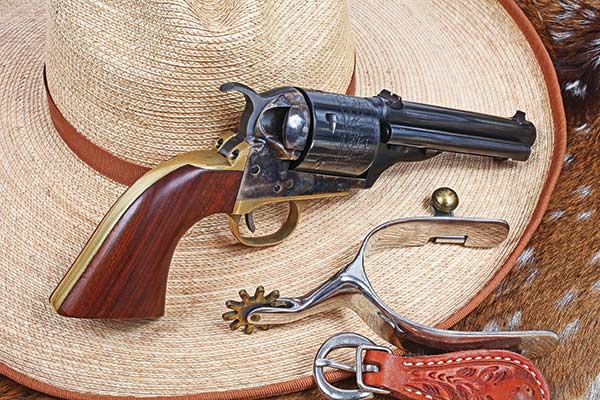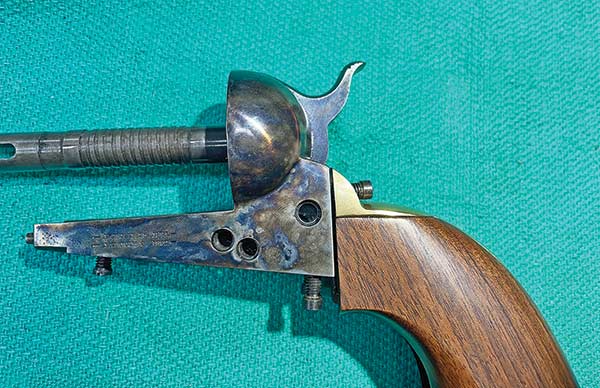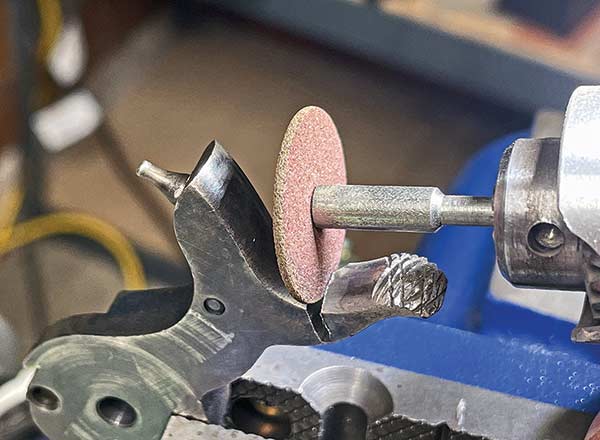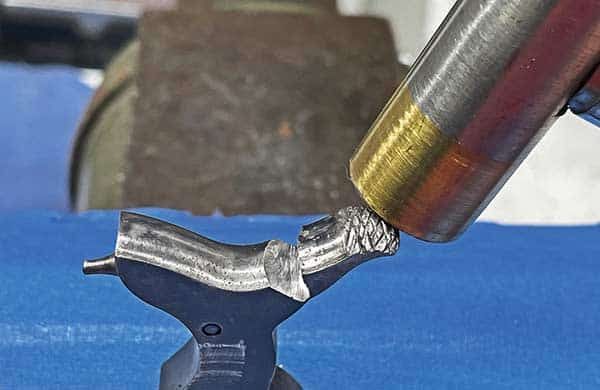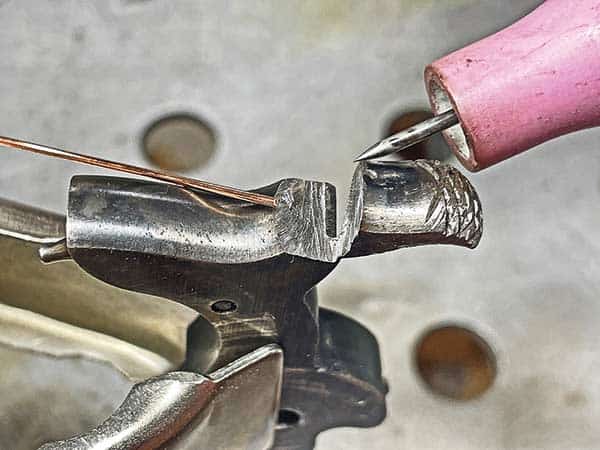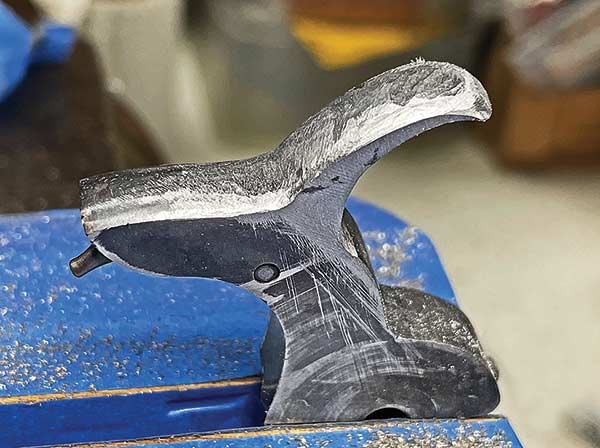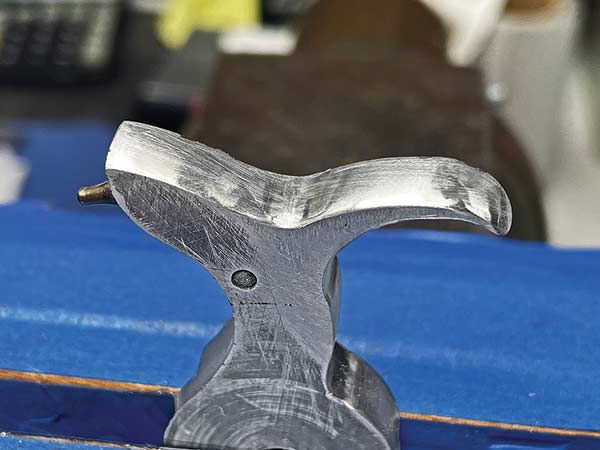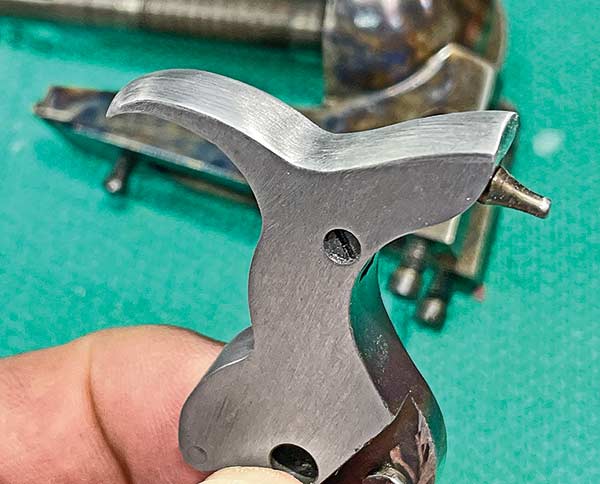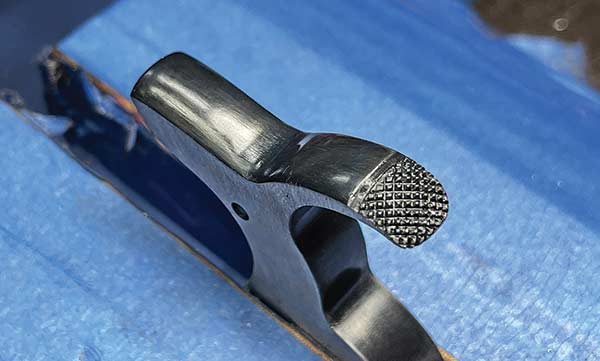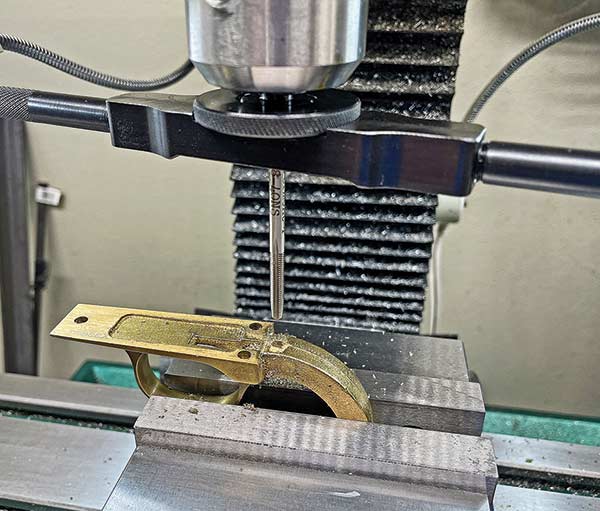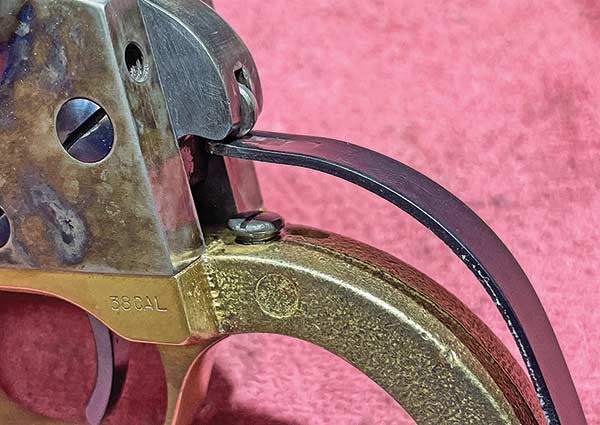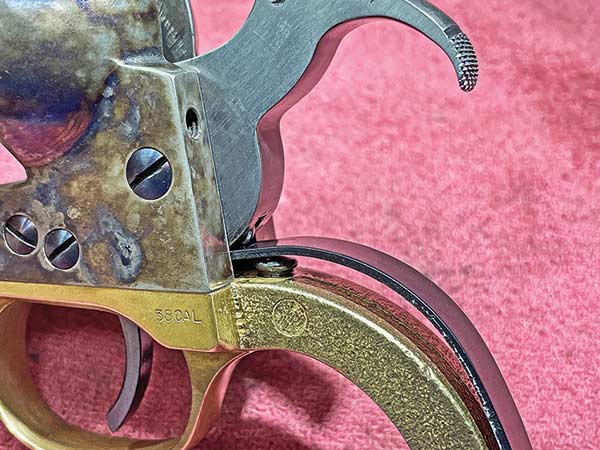Lower That Hammer Spur!
A Simple Mod Enhances Handling
I have a nifty Uberti “Cartridge Conversion” single action in .38 Special. I’ve put decent sights on it, slicked the action up and even put a hammer over-cock stop on it, but I’ve never liked the hammer spur angle. Black powder revolvers are famous for their “too high” hammer spur, making easy one-handed cocking often ungainly and awkward.
One day not long ago, I was looking at it, and it suddenly dawned on me it’d be an easy fix. Ten minutes later, it was in pieces and I had the hammer in my vise. A few short minutes later, I had partially cut through the hammer spur with a Foredom tool and cut-off wheel and used my shop-made hammer to tap it down a bit. Semi-scientific eyeballing revealed it looked about right, so it was off to my shop. I do my gun work at a bench in my garage, but my welding gear lives in the “big” shop.
I’m a self-taught TIG welder, and it’s paid no end of dividends over the years. Filling holes, welding up sears, 1911 frames, filling “oopsie” dovetail cuts or doing a zillion other welding jobs has made life easier in the shop. Like the old saying goes, “If you can weld, then anything is anything you want it to be.” Give or take some, I suppose.
A Quick Weld
I put some heat paste on the sear areas to keep heat from flowing there, set the gear up and in about five minutes had the gaping canyon left by my sawing and bending filled.
Back at my bench, it was all hand files, small needle files, abrasive papers and eventually the Foredom tool with various tools. Once I had the spur shaped the way I liked it, I put a bit of checkering on the thumb area. I also used a flat sanding block with 220-grit abrasive to polish the hammer sides to make things look nice. I like that 220 surface finish; it’s subdued but handsome.
Another Idea
Once the gun was reassembled, the difference was huge. Suddenly the hammer spur was right at hand and easy to find and cock. But I remembered how the hammer over-traveled badly. This means at full cock, it goes past the sear engagement point and then sort of bumps back up against the sear surfaces when you release it. Over time, it beats the mating surfaces and causes fast wear and a sloppy action feel.
I knew a trick and decided to do it. First, drill and tap an 8-40 or so hole into the bottom portion of the grip frame, below the bottom of the hammer. Peek at the photos to see where. Then put a screw into it and slowly adjust it until the spring hits it right at the point the hammer reaches full cock. The photos explain simply. What you end up with is a very firm “stopping” point, with no over-travel. This keeps the sear surfaces happy and, frankly, feels great when you cock the hammer too.
It takes a bit of fiddling, though, turning the screw a tad, reassembling it, trying the hammer, turning the screw a bit, etc., until you get it just right. Once it’s right, I turn the screw in until it stops, keeping tabs of the turns. Then squirt some Loctite on it and re-thread it to the correct spot. You could also measure it with a caliper, I suppose. But try it one final time to make sure it’s right before the Loctite sets.
Final Thoughts?
Other than the welding part, all of this is easy and can be done with hand tools, even the drilling and tapping for that stop-screw. I’m betting most of you “know some guy who welds” or can find a local shop good for a $20 job likely done while you wait.
Something like this is satisfying to do and can really change the way you like a gun. Experimenting on a black powder single action is fun, and if you mess up badly, you’re not out a huge amount of money. Most of the mods, like action work, the hammer spur, the hammer stop, maybe re-cutting the muzzle chamfer, etc., are all well within the ability of anyone with even rudimentary tool skills, and it makes a big difference in how these guns function. A few files, some abrasive paper, a vise, maybe a Dremel-type tool, a tap and die set and you’re good to go for a good adventure — or three!
For more info: Brownells.com; HarborFreight.com

